Writing every Endless Mile guide is a huge commitment, so I thought I’d share what happens each step of the way. After guiding over 3,000 people in several countries, I’ve developed a distinct, personal style as well as an ability to explain complex issues in a way that’s easy to understand. At least that’s what clients say!
Endless Mile is a one-man business. I’m responsible for each step of production, so the decision to develop a new guide undergoes much consideration. At first I never know exactly how many pages it will contain, how many illustrations I’ll have to create, nor how long the entire process will take. But bit by bit, the guide begins to take shape. Deciding to write about the Mosteiro dos Jerónimos grew from a long-time fascination of Portugal’s most famous monument, & the cloister takes my breath away every time I visit. Let’s walk through what it takes to produce an Endless Mile guide using the monastery as an example…
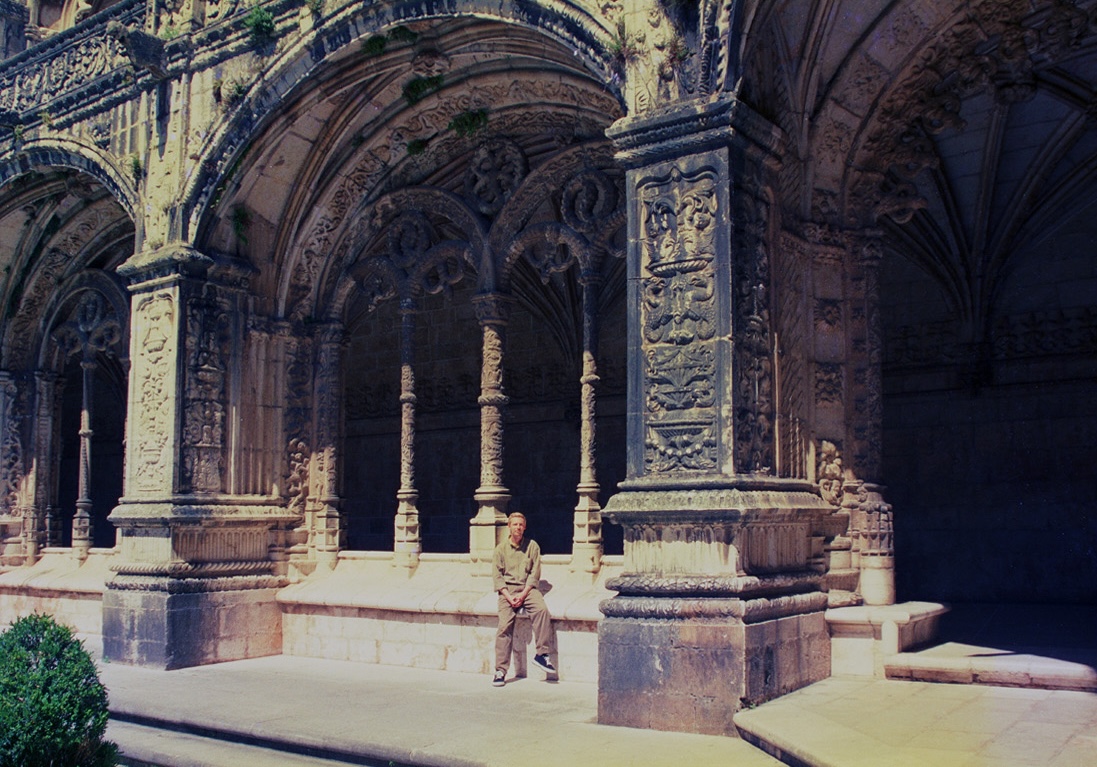
Step 1: Research
Although not scholarly in tone, Endless Mile guides are based on academic research. Performing a broad search for any- & everything on a particular monument often turns up surprising results… especially older articles from the beginning of the 20th century. I typically download everything, skim each article to see if it will come in handy, & keep a list of secondary topics for more searches later. Whenever I have free time, I’ll sit down to read & take notes. This often takes several weeks, especially if I find entire books dedicated to a topic. Surprisingly not many books in print exist about the monastery, but the few out there are great practice for Portuguese!
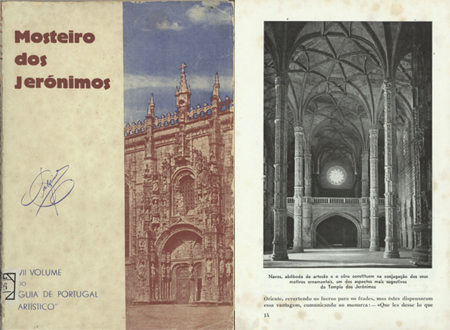
Step 2: History outline
At this point, I have to decide how much background info to include. Super tricky. I often use my own experience learning about something new to guide me in this step. For example, growing up in 1970s Memphis, my knowledge of European royal houses was almost nil. For that reason I make a conscious effort to explain royal family history as well as relate it to modern topics that are familiar to readers.
One thing I enjoy about writing this section is that I can fill some of the gaps in my own knowledge. A benefit to including this section first in each guide means that info included on the walking route is lighter in tone. By reading background info first, you’ve already got a basis for the visit by the time you begin. Like Step 1, this part can take several weeks to complete as I start to write & consider a basic outline.
Step 3: Develop walking route
Time to see if all the above planning paid off by making a visit in person. For the monastery, I had to decide what points were important enough to stop & share additional information. Endless Mile guides are big on making small details come together, so info points must be precise. One approach I use is taking lots of photos & slip into the role of first-time visitor… sometimes I get home, check out what’s on the camera & discover something new. Once I have a general idea of how the historical outline & the walking route fit together, I have to make sure readers can reproduce that experience on their own. It may take another few weeks to do this.
Step 4: Map making
Endless Mile guides contain several high-quality maps. It’s a must. My very first map of the mosteiro used an infopanel posted near the church entrance as a model. After 5 days of drawing, I had a good working sketch based on the official version. Guides that use city maps (like Azulejos of Lisbon) take considerable more time to draw.
Step 5: Verify maps
The moment of truth! Is everything where it’s supposed to be? Oftentimes not. You can imagine that official maps etched in metal or printed on glass don’t get updated often, & detail can be minimal. I returned to the monastery several times to check the walking route & added details for columns, draw barricades, sketch steps, count doors, basically whatever necessary to make the map better. Click on the image below to see some of my notes:
Step 6: Design & illustrate
Layout often depends on the amount of text for each particular item, as well as making the overall guide easy to read. Sometimes there’s no other choice except to fill the page with text, but wherever possible, adding white space makes for easier reading. InDesign is the best tool for layouts, although learning how to use the program took time. I spent several months with tutorials, did a crash course in basic graphic design & asked friends who work in the field a ton of questions.
I use Illustrator for all graphics, & again, that was another steep learning curve. In 2008 when I began toying with the idea of writing my own guides, tablets & smartphones weren’t widespread. Most people would have to print these guides in order to use them, so I relied on artwork as opposed to photography. Much has changed since then, so now I incorporate quite a few photos —either archival with no copyright issues or my own current pics— to help illustrate concepts. However I still spend a lot of time drawing in order to give Endless Mile guides a clean, crisp look.
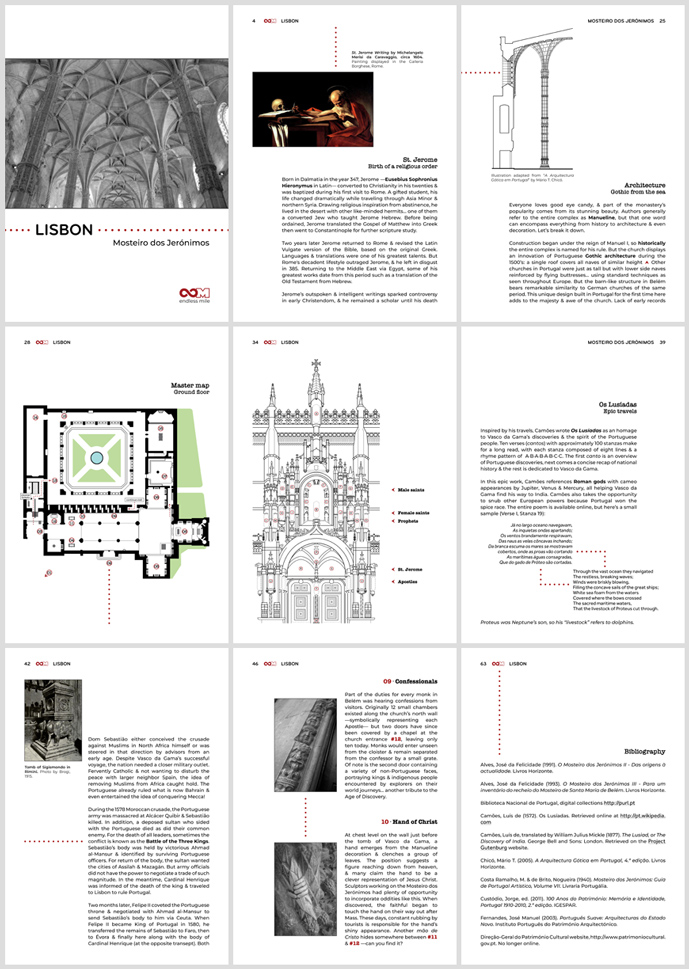
Step 7: Find a volunteer
While I always take the final version out for a test run myself, there’s nothing like a fresh set of eyes. Often during in the process of writing, I’ll ask friends to proofread for me in exchange for a free final copy. Even better if they live locally & visit in person. While I run the show at Endless Mile, I couldn’t make it work without my friends. Thanks for all the support!
Step 8: Webpage creation & marketing
Once everything reads well & looks great, the guide goes for sale. That involves writing copy for a new webpage, selecting images, sending out emails announcing the new guide & contacting local agencies. Lisbon is great for that. Admittedly, I suck at marketing but I do what I can. Word of mouth works wonders though.
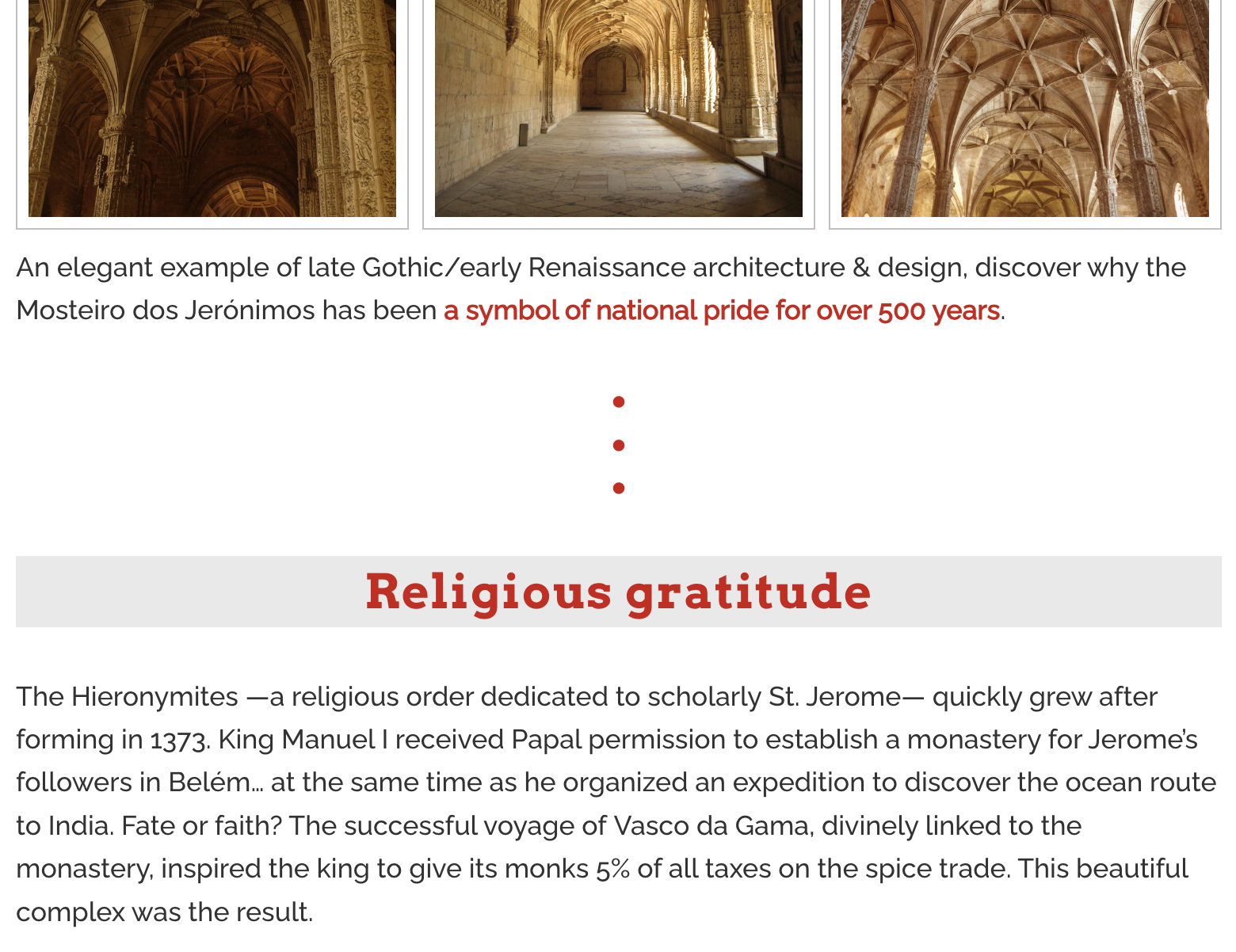
Step 9: Updates
Since I visit Portugal often —for both work & for fun— I’m aware when important changes occur, like raising the admission price or when sections close for restoration. A quick update is easy enough to do, but sometimes I’ll decide on a major overhaul. The first version of the Mosteiro guide, released in November 2012, had few photos. Later I decided to add pics of each stop on the walking route, rework some of the design & spend a few days drawing that crazy southern entrance. As a result, the guide grew by five more pages. That should do… until another change in the monastery comes along!
In the end, Endless Mile’s mission is to help people understand & relate to the places they visit. The Mosteiro dos Jerónimos certainly has stunning architecture, but it’s also a modern-day reminder of the times when Portugal controlled ocean trade routes & created a global empire. As a pantheon for the second Portuguese dynasty, royalty had no idea that centuries later they’d be the centerpiece of a Salazar-era Expo promoting Portugal’s greatness. As you can tell, several months of work go into each Endless Mile guide… visit the Mosteiro dos Jerónimos with us to learn all you can!
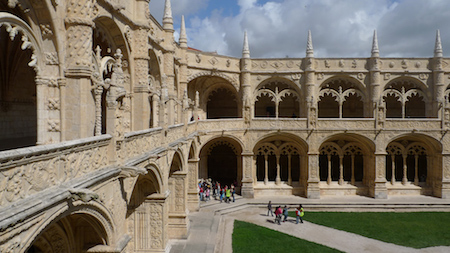
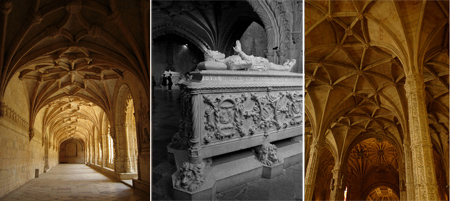
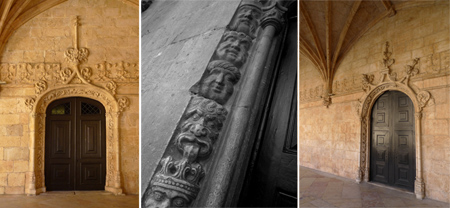
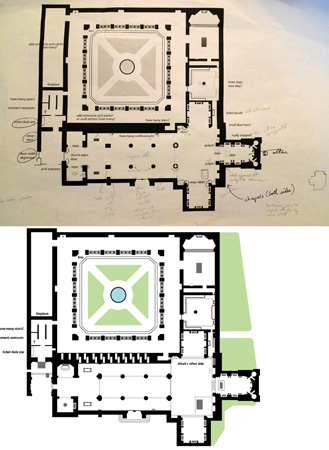
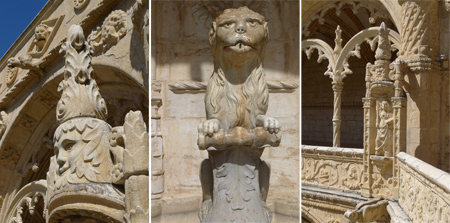
This is fascinating, Robert. Thanks for sharing the process of writing for Endlessmile. Like you, the cloisters at Mosteiro dos Jerónimos took my breath away. I have a photograph of them hanging in my living room. The RS trip to Portugal I was on in 2015 is an ongoing happy memory. Hope to return to beautiful Portugal again.
Hello, Kris! Even with all the travel I do for Rick, the Mosteiro dos Jerónimos remains one of my favorite places in Europe. So glad to hear you feel the same! I’m looking forward to taking people to Portugal again this year… but maybe my waistline isn’t 🙂 Hope to see you in Portugal at some point!!